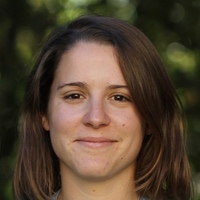About
- Responsible staff
- Questions related to the content of the course?
- Contact hours
- Marking
- Course Content
- Study Goals
Responsible staff
Questions related to the content of the course?
Please do not email us for questions, we want everyone to benefit from the answers we provide, and we encourage students to also answer questions.
For all questions related to the content, please use the GEO1001.2020 forum on the GitLab page of the TUDelft; sign in with your NetID.
Only use email for personal issues.
Contact hours
- Tuesdays 10:45-12:45 (online)
- Wednesdays 11:15-13:15 (online, you can use geolab at BK if you would like to)
- Fridays 10:45-12:45 (online)
How online courses will function?
Marking
| final exam | 40% |
| 3 assignments (20% each one) (2 programming with Python, 1 with C++) | 60% |
- a total of 60% overall or above is necessary to successfully pass the course;
- a minimum of 50% for the exam and each independent assigment is necessary;
- there is one resit for the exam;
- there is one resit for each assignment (only at the end of the course);
- if the student still fails after the resits, then the student has to redo the whole course the following year.
Course Content
Within this course we will focus on introducing basic concepts related to statistical analysis, remote sensing technologies and linear algebra concepts. The course has 3 distinctive parts dealing with each of these contents. The knowledge derived from the course will prepare you to deal with future datasets along the master, as well as overview multiple open-source tools to work efficiently in the geomatics industry.
The course is composed by three parts that will prepare you to deal with real world data, being able to:
Part A: Introduction to statistics
- Analyse and process information to derive statistical conclusions
- Use python libraries to perform statistical analysis
- Understand Research Designs to successfully derive conclusions from a priori hypothesis
Part B: Remote Sensing
- Describe the basics of the electro-magnetic spectrum and EM interaction with atmosphere, land and water
- Understand the basics of image processing, image classification, and how to visualise images
- Use Python to process, transform, and extract information from digital image
Part C: Linear Algebra
- Vectors, matrices, vector/matrix arithmetics.
- Linear systems, least squares.
- Eigen values and eigen vectors, singular value decomposition, and their applications.
The course has both theoretical and practical parts where students manipulate, process, extract information, and derive conclusions from data.
All the labs are programming tasks (in Python and C++), and other open-source libraries and software are used.
Study Goals
At the end of the course, students will be able to:
- Process and analyse scientific data using python for statistis purposes
- Describe the basics of the EM spectrum and EM interaction with atmosphere, land and water
- Understand the basics of signal processing
- Compute and use covariance matrices
- Detect blunders in sensor data using least-square adjustment
- Apply linear algebra and statistics in the Geomatics context



